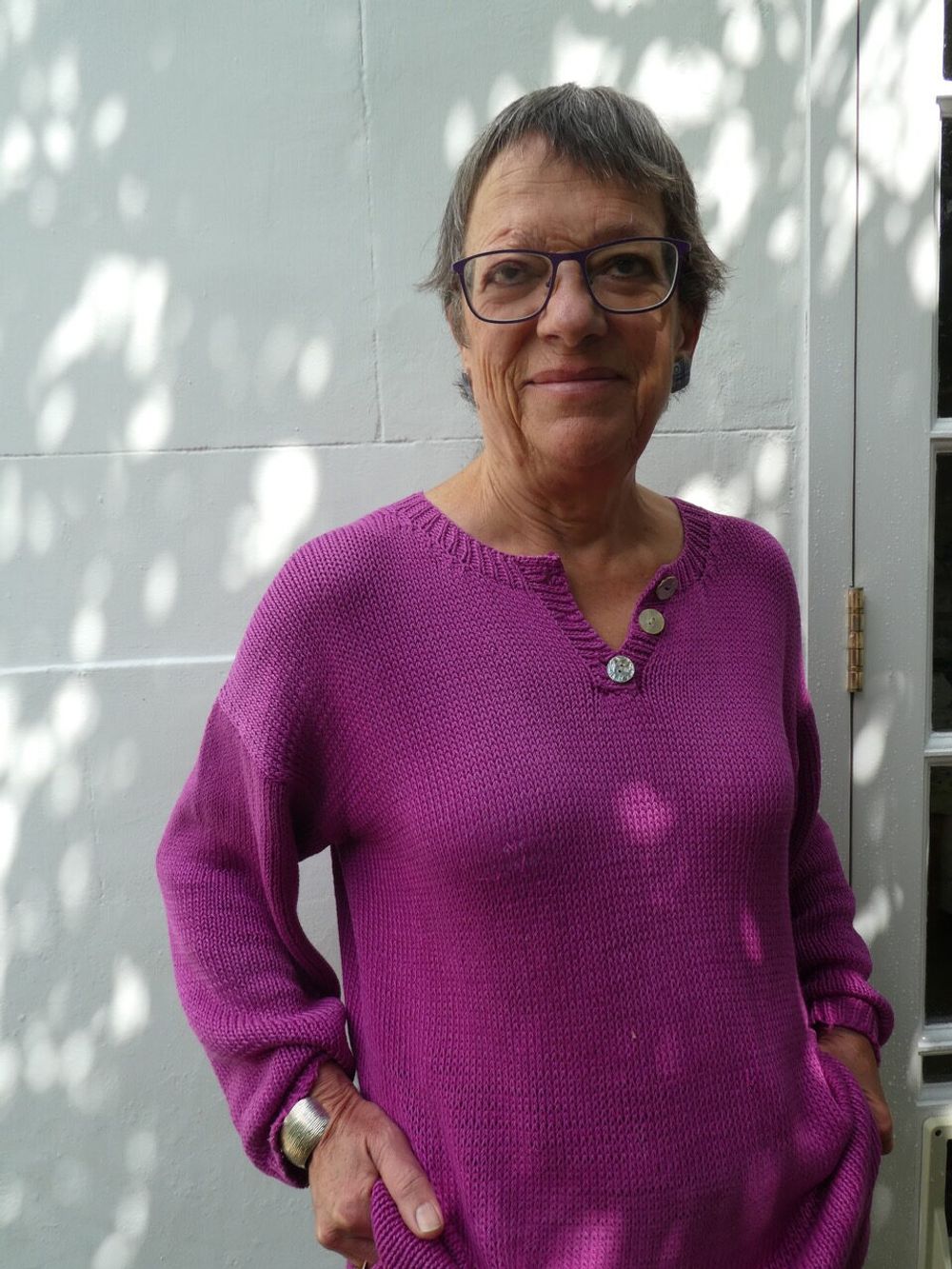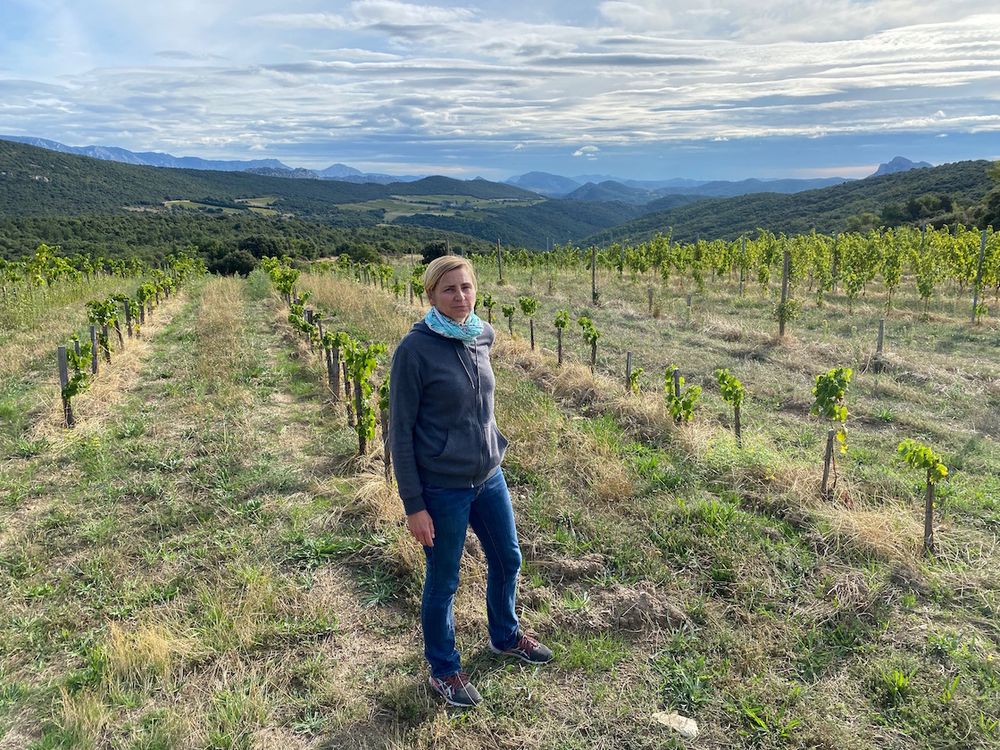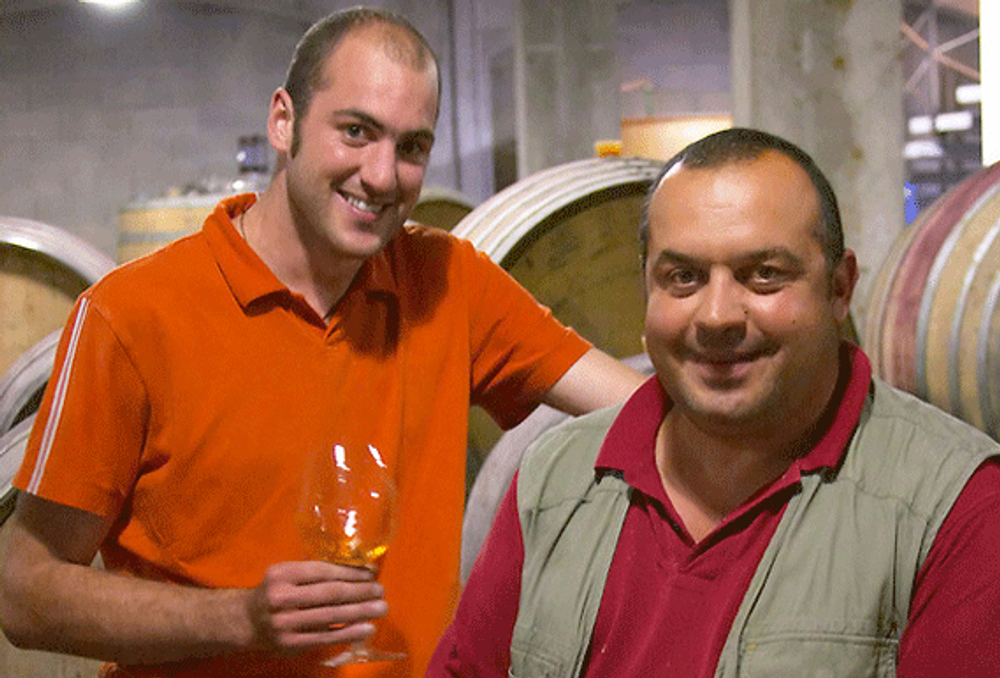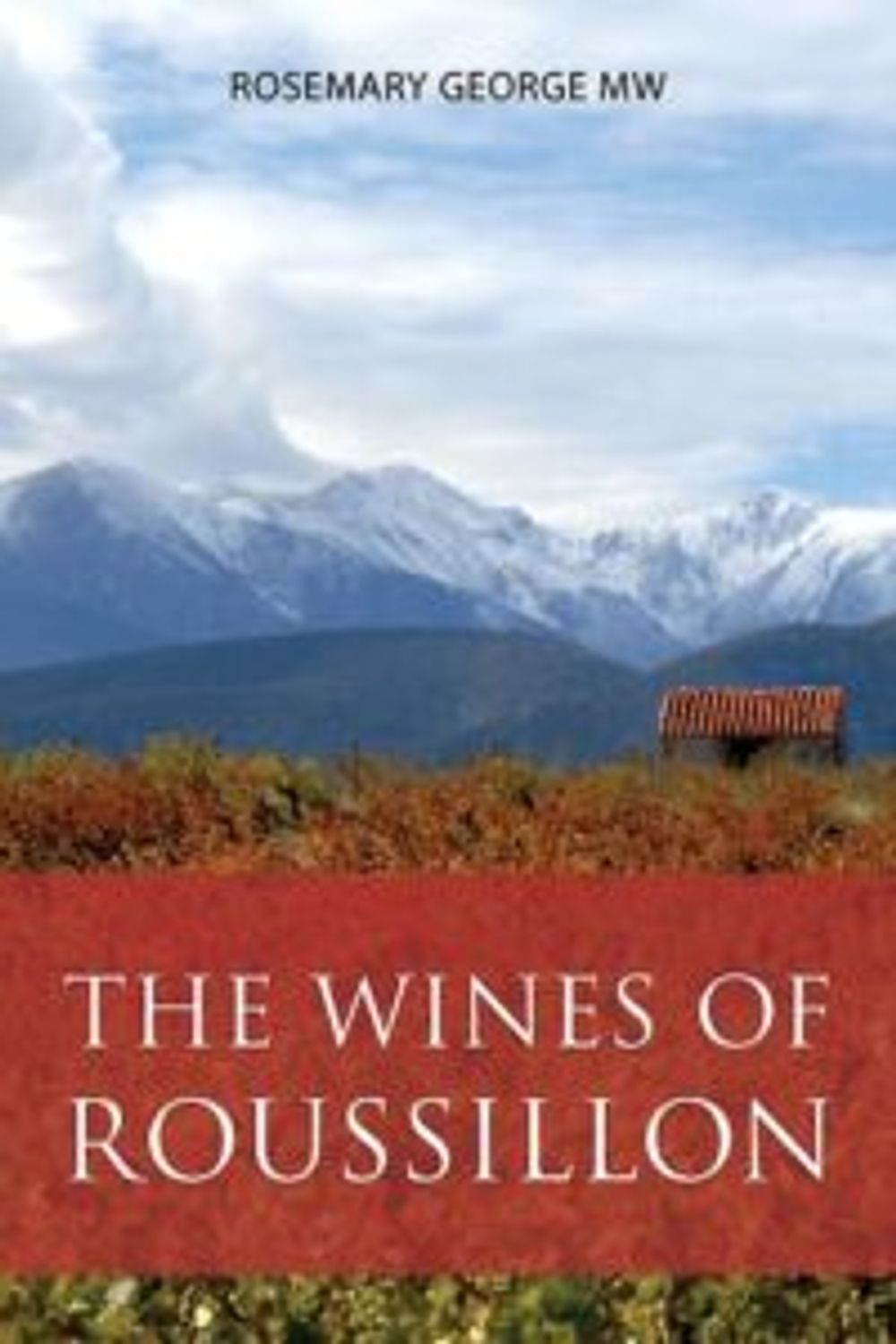“That is one of the puzzles. Why has Priorat captured the wine drinker’s imagination, but not Roussillon, when they have definite similarities,” says George.

Rosemary George, August, 2021
PETER DEAN: How the devil are you?
ROSEMARY GEORGE: Pretty well, all things considered.
And what have you been up to for the past 18 months?
Writing The Wines of Roussillon. It turned into a very satisfactory lockdown project. I was in the middle of what I expected to be my last research trip there, in March last year, when Macron closed France down, so I came back to London rather sooner than planned and got on with the writing, with a deadline extended to November. And then I managed to get back to Roussillon during the summer to finish the research and meet the deadline.
What was the objective of this book compared to others you have written about the region?
This one focussed on Roussillon alone, and I attempted to emphasise its individuality. Whereas my other writings on Roussillon have been part of larger books, French Country Wines and The Wines of the South of France.
Have these strange times ironically been good for an author like yourself?
I certainly seem to have been busy, with webinars and Zooms, and now some vineyard visits closer to home, not to mention the urban wineries of London. And I have managed to keep my blog on the Languedoc going, despite not being able to visit any vineyards there. There is no doubt that the internet has helped enormously with communications between wine writers in different countries, with, for instance, a very diverse attendance for the Circle of Wine Writers’ various webinars, with members from the States, South Africa, India and other parts of Europe.
You are considered to be one of the world experts on the wines of Roussillon. How did that come about?
By accident! It is really only with writing this latest book that I have got to know Roussillon in any depth. Before it has always been part of another book or the subject of an article or two.
What is it about the region and the wines that draws you to them?
Its originality – the wines are very different from anywhere else in France and it is a fabulous region to visit, with spectacular scenery and the dramatic backdrop of the Pyrenees.
Do the wines still excite you? Because presumably their styles have changed since the days when you first discovered them.
Absolutely. I think you have to look at the two strands of Roussillon viticulture, the fortified Vins Doux Naturels, or vin doux, as the locals call them, and then the table wines, or vins secs. The vins doux are the tradition of Roussillon and the best are fabulous wines, aged for years in barrels, either outside or under a roof, and subjected to all the climatic vagaries. Sadly they are not as appreciated as they should be, partly as their reputation is tarnished by cheaper mediocre vins doux. A younger style of vin doux has also been develop called Rimage or Grenat, depending on the appellation. You could compare it to ruby port, but fresher.
The quality of the vins secs has improved enormously in the recent years. Remember that they are a relatively recent phenomenon and there is now a much better understanding of winemaking than there was 20 or even 10 years ago. I was particularly surprised but the quality of the white wines, often Côtes Catalanes rather than appellation Côtes du Roussillon. They are wines from Macabeo, Grenache Gris and Grenache Blanc, with really lively acidity, which is surprising, given the temperatures of Roussillon.

Wendy Wilson, estate manager of Le Soula, with typically rugged Roussillon landscape
For someone who is unfamiliar with the wines of Roussillon could you describe what are their defining characteristics?
Again there are two strands to that answer. The best of the vins doux are beautifully aged rancio wines, with wonderfully nutty flavours. They really age well. And for vins secs, rich spicy flavours for the reds. However, Grenache Noir, the dominant red variety, can be surprisingly elegant. And there is some wonderful old vine Carignan, though often the oldest vineyards are field blends of Grenache and Carignan.
How do they differ from wines of the Languedoc?
Firstly the Languedoc places much less emphasis on vins doux, with just a handful of appellations based on Muscat. And Grenache is much more important for the vins secs in Roussillon than in the Languedoc You do find Syrah in Roussillon, but I do not think it has taken over to the extent that it has in the Languedoc.
Roussillon is now part of the larger region of Occitanie Pyrénées Méditerranée, but the thing to emphasise is the difference between the history of Roussillon and that of the Languedoc. Much of Roussillon was part of Spain until the treaty of the Pyrenees in 1659. Roussillon speaks Catalan and the Languedoc speaks Occitan. For Roussillon, the Pyrenees links it with Spanish Catalonia, rather than forming a barrier.
Do you still think this region suffers from being over-complicated for the consumer to understand?
I don’t think the appellations are that complicated. You have Côtes du Roussillon, in all three colours, which covers a large part of the southern part of the department of the Pyrénées-Orientales; Côtes du Roussillon Villages is red and covers the northern part focussed on the Agly Valley, with Maury Sec a separate appellation, there are some named villages, Latour-de-France, Caramany, Lesquerde, Tautavel, and les Aspres, which is a collection of villages. And for vins doux, Rivesaltes and Muscat de Rivesaltes covers all the departments, apart from the four villages of Banyuls and also Maury. Collioure is the vin sec synonymous with Banyuls. And for IGP, Côtes Catalanes is much more important than Pays d’Oc. There are far fewer wines from the international grape varieties than in the Languedoc.
Would it be fair to say that Roussillon gets less attention to the Languedoc? And if so why is that?
That is one of the puzzles. Why has Priorat captured the wine drinker’s imagination, but not Roussillon, when they have definite similarities. Tarragona was a fortified wine, and the winegrowers have successfully adapted to making world recognised table wines in Priorat, whereas I feel that Roussillon is still struggling to acquire an international reputation. No one has really given me a satisfactory answer to that question – possibly the fact that Barcelona is an international city, whereas Perpignan is a more of a provincial town.
If that is the case then presumably this presents UK consumers with a number of opportunities?
Yes, there is no doubt that there are some wonderful discoveries to found in Roussillon. And such enormous variety. The only style that Roussillon doesn’t really make is sparkling wine, but there are people wondering about sparkling Macabeo. And don’t forget Rancio Sec, an unfortified oxidised wine that is the region’s answer to fino sherry.

Gérard Gauby and son Lionel: his influence cannot be underestimated
Could you name 6 producers who you think collectively show off the wines of Roussillon at their best?
Only six …… You have to mention the pioneers, Domaine Gauby and Mas Amiel. Gérard Gauby has attracted a host of other excellent winemakers to his village of Calce. And Mas Amiel was the key estate of Maury, but numerous other estates in Maury are making their mark.
I have a soft spot for Domaine des Soulanes, as I stayed there during part of my book research. Domaine Vaquer is another favourite, in les Aspres; also Domaine La Tour Vieille in Collioure. Roc des Anges makes wonderfully elegant wines. Then there is Domaine des Chênes in Vingrau, Coume del Mas in Collioure. Domaine de Rancy makes wonderful vin doux. I could carry on.
Could you name 6 up-coming producers who you think we should keep an eye on and why?
Domaine Danjou-Banessy – run by two brothers who question wine-making convention a thoughtful way.
Le Soula – Wendy Wilson is a talented winemaker
Domaine Paul Meunier Centernach – Paul Meunier comes from a winemaking family in Burgundy and came to Roussillon as he loves fortified wines.
Domaine des Schistes – a new generation doing interesting things, and the same at Domaine Gardiés.
Clos du Rouge Gorge – an outsider with an interesting take on the wines of the region.
Clos Mané – another successful generation change.
Domaine Madeloc – the Roussillon estate of Pierre Gaillard of Côte Rôtie fame,
Domaine Pietri-Géraud and Mas Karolina – both run by wonderfully enthusiastic and talented women.
And there are numerous others, that I could mention, some more established, and some new and small. Le Mas de la Lune, Domaine Benastra and Domaine la Bancale are three recently created, small estates that have made a good beginning.

The Wines of Roussillon by Rosemary George MW is published by Infinite Ideas Classic Wine Library and available to buy here.
Taste the Languedoc – George’s blog can be accessed here.
Main feature photo is by Carla Capalbo









































